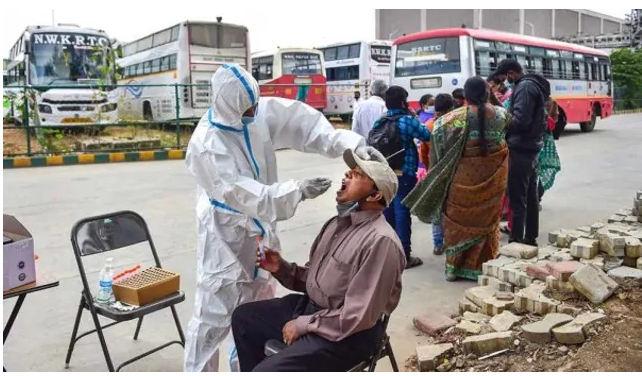
Number of new COVID cases peaks, but big variations among states, UTs
India reported a record 414,188 new cases on May 7 – about 32 per cent higher than the world’s previous peak reported by the US last year, but with just a fraction of the testing and vast undercounting

The number of new coronavirus infections in India has peaked, but states and Union territories vary considerably in near term trajectories of COVID-19 cases, researchers have said.
Trend values of daily new cases are forecast to continue to increase over the next two weeks for Tripura, Himachal Pradesh, Meghalaya, Manipur, Tamil Nadu, Jammu and Kashmir, Mizoram, Puducherry, Punjab, Nagaland, Assam and Odisha, according to a tracker developed by researchers at Cambridge Judge Business School and the National Institute of Economic and Social Research.
The projections are based on reported numbers and are in line with those from some other experts, including central government advisers, Bloomberg news agency reported.
The tracker has been developed as part of a pandemic monitoring series devoted to India and its states and UTs. It provides near term forecasts of the trajectory of the pandemic, identifying states and UTs that are at high risk of increases in infection incidence.
Also read: India needs more than patent waivers to deliver more COVID vaccines
India reported a record 414,188 new cases on May 7 – about 32 per cent higher than the world’s previous peak reported by the US last year, but with just a fraction of the testing and vast undercounting.
The highly contagious triple-mutant COVID variant spreading in India has now become a global health threat. The World Health Organization (WHO) on Monday reclassified it as a “variant of concern”. The B.1.617 was previously labelled a “variant of interest”.
Preliminary studies have shown that the variant spreads more easily than the original virus and there is some evidence it may able to evade some of the protections provided by vaccines, said Maria Van Kerkhove, the WHO’s technical lead for COVID-19.
“And as such we are classifying this as a variant of concern at the global level. Even though there is increased transmissibility demonstrated by some preliminary studies, we need much more information about this virus variant in this lineage in all of the sub lineages, so we need more sequencing, targeted sequencing to be done,” Van Kerkhove said.
“What it means for anybody at home is any of the SARS-CoV-2 viruses circulating can infect you and spread and everything in that sense is of concern. So, all of us at home, no matter where we live, no matter what virus is circulating, we need to make sure that we take all of the measures at hand to prevent ourselves from getting sick.”

